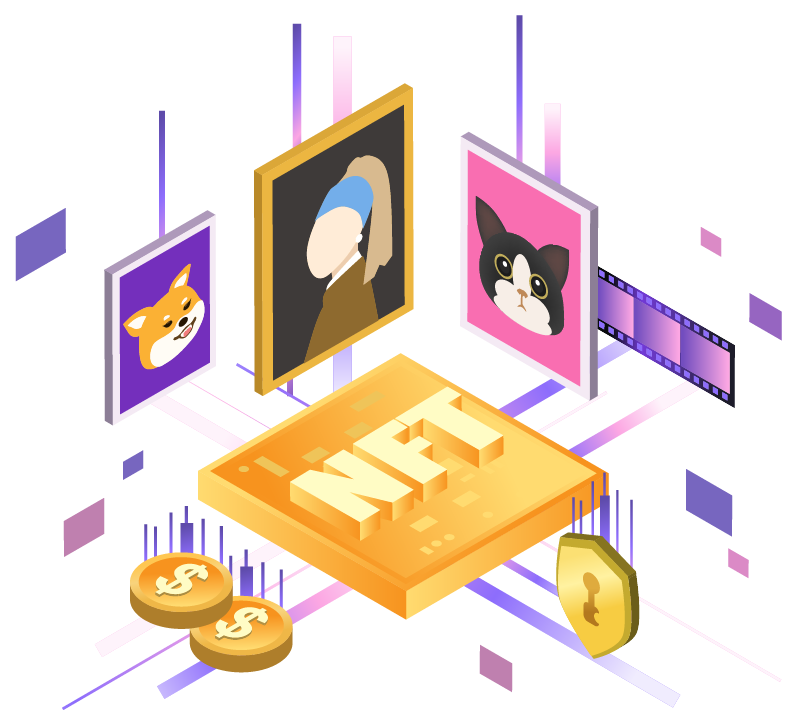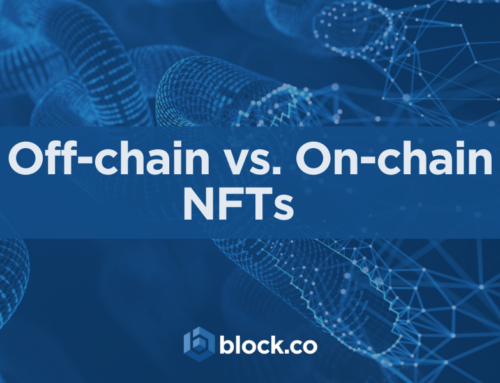How to Master NFTs, NFT Strategies, and Marketing with NFTs

By Zein Chamas | 27/01/2022
What you Need to Know About the Metaverse
All jargon aside, you need to know what the metaverse is because all your future marketing is there. That’s not just our opinion, but influential people like Garyvee also believe so…
That’s why Mark Zuckerberg changed Facebook to Meta;
“The metaverse to me today feels like the next frontier in social connection in much the same way that social networking did when I was getting started back in 2004. That’s a big reason why we wanted to change the brand of the company”
That’s why brands like Adidas are investing tens of millions of dollars in the metaverse.
“Adidas Launches NFT Line, Joins Footwear Rivals’ Expansion Into Metaverse….. Adidas Originals had announced Thursday (Dec. 16) that it would soon launch the NFT line titled “Into the Metaverse” — pymnts.com
Anyway,
This is what you need to know about the metaverse.
The metaverse, a term first coined in Neal Stephenson’s 1992 sci-fi novel Snow Crash, is a blending of digital and physical existence. Almost 30 years later, that definition is taking shape before our eyes. Digital-twin stores and augmented shopping experiences are paving the way for the next retail frontier — one that is intuitive, immersive and engaging. The rapidly evolving digital space is radically affecting all industries and retail is at the forefront of this change.
According to IBM’s 2020 US Retail Index, the pandemic has accelerated the shift away from physical stores to digital shopping by approximately five years. Ecommerce is having to step up its game quickly. Although they are used to mimic physical stores, digital spaces are borderless, which opens an abundance of creative opportunities.
“Brands can push the boundaries of creativity in the metaverse and offer experiences that are unrepeatable in real life,”Christina Wooton, vice president of brand partnerships at Roblox.
People aren’t just socializing in digital spaces — they’re working, shopping and discovering products there, too.
The metaverse is thus the answer to this growing digitization of our daily life. A virtual space that allows for life to happen digitally. Everything from shopping, to connection, is now translated into a virtual experience through the metaverse.
Long story short, you have an avatar that is a digital representation of you, that goes shopping in an Adidas store in the metaverse. And guess what, just like in real life, Adidas and other brands will market themselves on the metaverse.
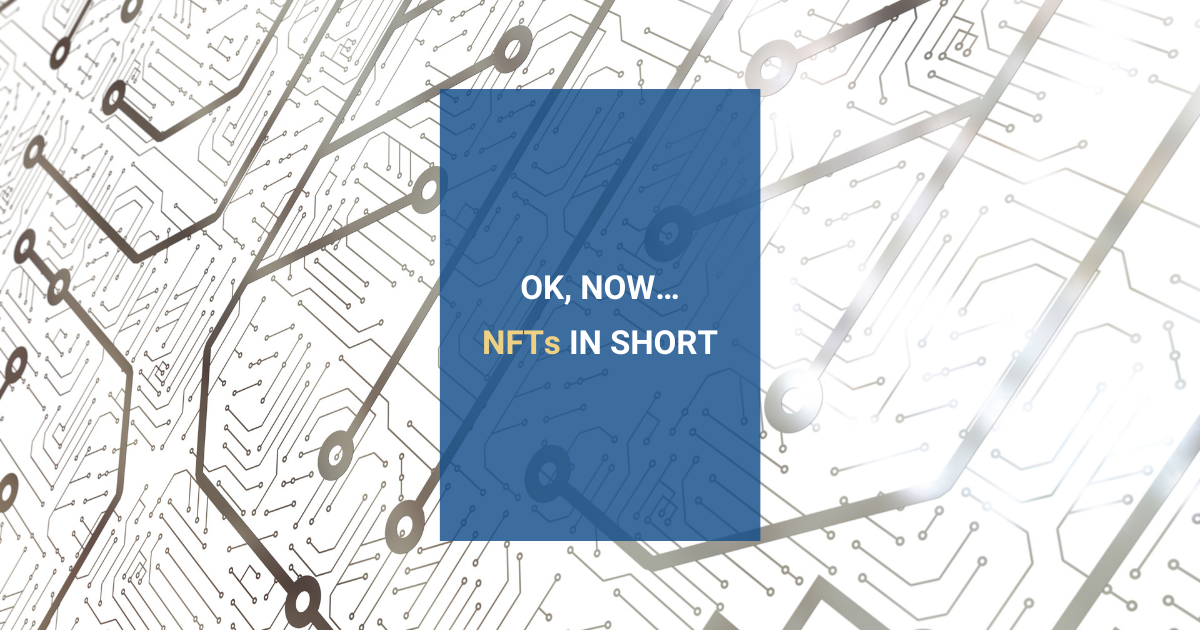
Adidas Originals has launched its first NFTs as it dives into Web3 and the metaverse, offering exclusive access to Adidas Originals experiences and products, including virtual wearables for blockchain-based gaming world The Sandbox and other platforms, plus physical products to match.
They are laying a foundation built with Web3 that will lead to new creative opportunities for partnerships, engagement through digital goods, and a path towards a more inclusive future.
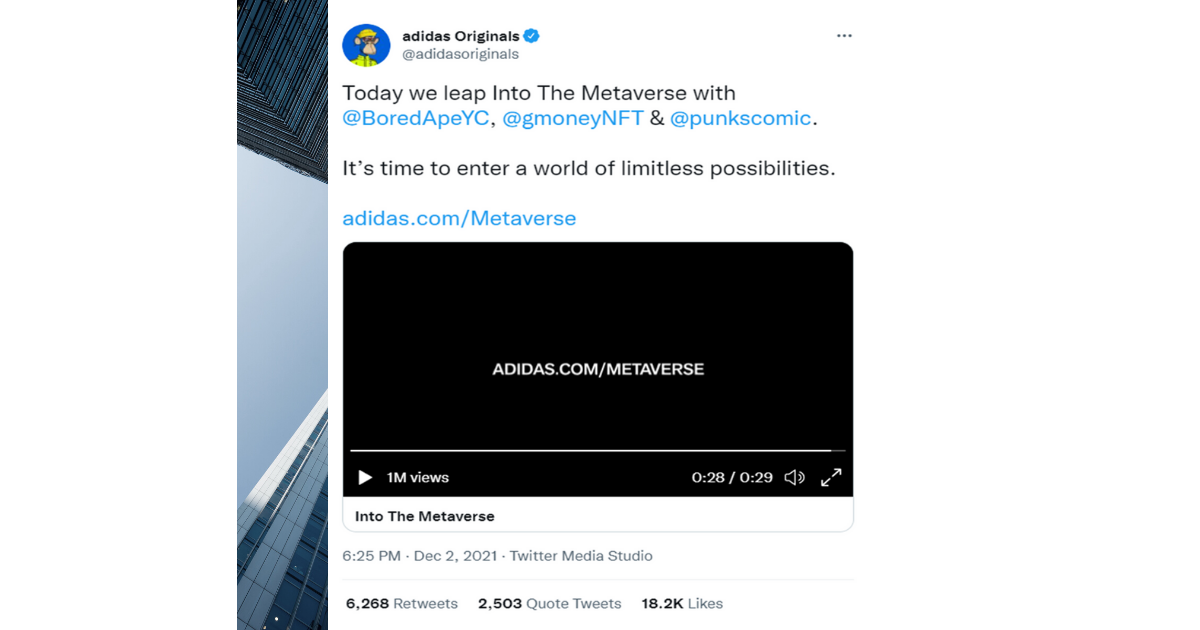
NFTs are non-fungible tokens, which means that they are unique digital items, and their uniqueness is verifiable through the code that is embedded in them on the blockchain.
So, relating this to what Adidas did in the above example, Adidas launched unique digital items that can be owned with proof, to their existing customer base.
Therefore, their customers who will be active in the metaverse, which will be represented as avatars, will be wearing these exclusive Adidas items that no one else would own in the digital world.
For brands like Rebecca Minkoff, NFTs offer a unique way of experimenting with avatars, developing brand engagement with a younger generation and committing to charities close to the brand, like The Female Founder Collective.
After her physical presentation during New York Fashion Week,Rebecca Minkoff said:
“We have always been at the intersection of fashion and technology. So, for us, NFTs were the next logical step in that progression. We wanted to test the idea of not just a 2D image, but also digital merchandise, as people begin to experiment with dressing themselves and their avatars and having more experiences online.”
Just like the real world, they will own designer items that will represent status, wealth, personality and style.
These items are NFTs.
Capiche? Great!

Anything: From digital art to sports, gaming and finance, fashion and luxury goods, music and entertainment, academic credentials, and fast-moving consumer goods can become an NFT.
NFTs have a vast application in all these industries and that is why a lot of businesses today are eyeing this innovative technology as an important revenue stream. Coca-Cola, Nike, McDonald’s, Pizza Hut, and other major brands have already utilized NFTs in their marketing campaigns. Whether it be celebrities, big brands or corporations, more eyes will turn to the NFT space, leading it to mass adoption.
One of the most successful drops performed by a brand was, in our opinion, the Coca-Cola Friendship Box, dropped on International Friendship Day.
The reasoning behind the drop of the NFT was not just to make an NFT, but to inject the core principles of Coca-Cola and celebrate both its heritage and ties to friendship, while also doing something to support a good cause as proceeds from the auction went to the Special Olympics International Organization. In other words, these NFTs were highlighting the brand values and brand experience that ties loyal customers to Coca-Cola.
It was important for them to stay true to the brand by bringing people together through unique “surprise-and-delight” moments of connection that feel right for Coke.
“And because NFTs are inherently built to be permanent and not transitory, they intentionally developed dynamic, ‘living’ NFTs that can be enjoyed again and again over time — just like Coca-Cola.”stated Josh Schwarber, global digital design senior director for Coca-Cola, also adding that:“the borderless and “geo-less” metaverse creates opportunities for the company to connect with consumers in new ways.”
WHAT DOES THIS MEAN FOR YOU AS A MARKETER?
It means that you should know and excel in your abilities to market NFTs, and that will set you apart from the marketers who haven’t caught up, as the marketer and marketing agency that will lead the way and succeed in the future. It also means that NFTs can be used for so many marketing principles, such as raising brand awareness, building customer loyalty and satisfaction, and most importantly, engaging their audience in so many new ways.
Agencies are looking at NFTs as a specialized service area. Last week, Vaynermedia announced the creation of an in-house team dedicated to NFTs called VaynerNFT, with AB InBev as its first client, as reported in Ad Age. VMLY&R, Huge and Digitas, all three being reputable marketing agencies, are also excited about the latest crypto craze — marketing drive.com
The opportunity that NFTs bring you in conjunction with marketing provides a new ground to explore interactions with consumers. Because of blockchain technology and NFTs, the principle of ‘scarcity’ now also exists in the digital world. This is because each NFT is rare and unique.
And therefore it is sellable and marketable.
NFTs are trendy, fun, and cutting-edge technology that actually have the potential to redefine the way brands do business and engage with their consumers.
At the same time, NFTs are a new revenue stream and an engagement tool for brands wishing to build on customer loyalty and their willingness to buy a part of the brand’s history.
There’s also great potential for recurring royalties with branded NFTs. The recurring royalty component is basically embedded in the digital code or “smart contract” of each “minted” NFT, allowing brands to set the expected royalty rate for resale. Brands will benefit from recurring transactions each time one of their NFTs is sold, plus, they’ll instantly know to whom it’s been sold, and for how much. Thus, a marketing tool that itself can generate revenue, rather than lead to revenues in the bottom line.
But, here’s the problem. Jay Pattisall, a principal analyst at Forrester, illustrated one issue perfectly.
“This situation feels familiar to what social was in 2009–10. Every time you brought it up, the brand was excited but not really sure what to do with it…. This feels like it could have a similar trajectory where it is a technology in search of a strategy.”
So, let’s get rid of the confusion, and master the art of Marketing with NFTs.
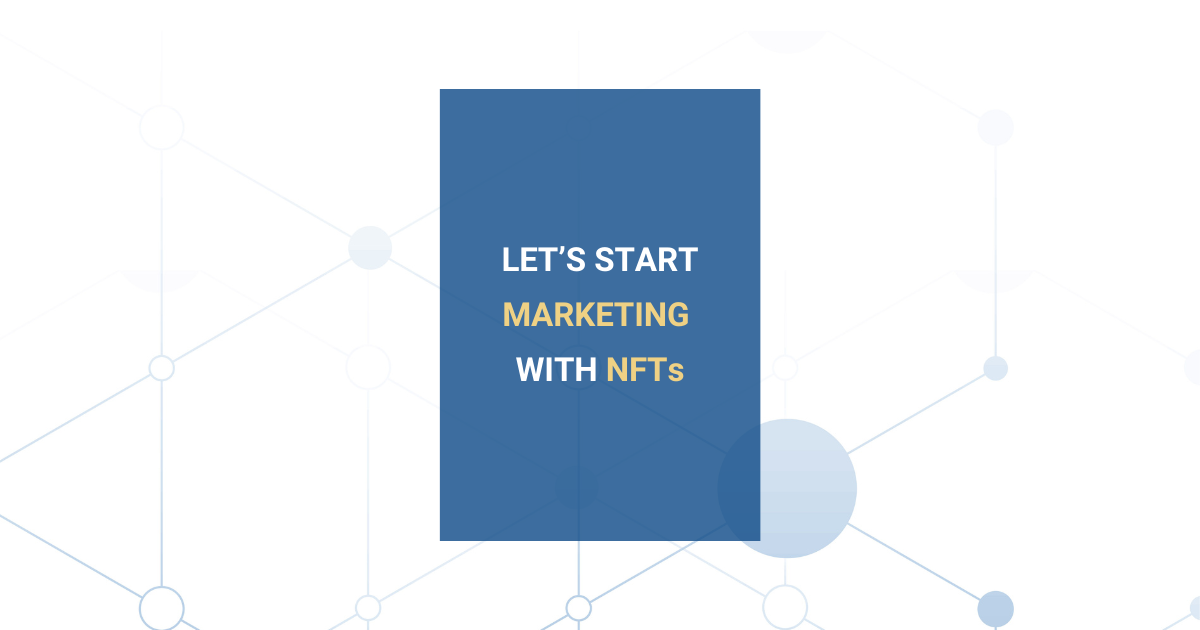
The main goal of NFTs, from a marketing perspective, was community engagement.
So, brands are currently using NFTs so that they can enhance the customer experience.
Brands have always searched for different tools to maximize the brand experience, through different channels, to create a lasting impression that remains after someone encounters or engages with a brand in any environment.
This new environment is the Metaverse. And NFTs are the tool to maximize the brand experience in the metaverse. Even outside the metaverse, NFTs have currently become a new tool in a marketing department’s arsenal.
Remember that NFTs are a one-of-a-kind digital asset that can’t be replicated. This means that having an NFT offered to you by a brand is something that only you would have which a lot of other people wanted and saw value in. They can digitize and give ownership to unique assets such as moments in time, collectibles, and almost anything that can be represented in a digital file that has value to a certain audience.
So, with this new tool called NFTs, marketers can now create unique brand experiences, increase brand awareness, and generate greater customer interactions.
How, you may ask?
The marketing team at NBA, in its efforts to engage with their audience and give them a unique brand experience, started “Top Shot”, where they sell highlight moments of their customer’s favorite player, making the person who bought this highlight the sole owner of this unique moment in time in NBA history.
What this means is that the person who bought this highlight, values this moment in time, and now owns this experience. That’s pretty unique.
“Lebron James lakers highlight sells for record $208k on NBA top shot” — Bleacher Report
Long story short, the things that people value are things that they are willing to pay for. NFTs make that digitally possible, to make that person a sole owner of that unique product, moment, etc…
NFTs are the new marketing tool that enhances the brand experience!

The first thing that you should start with is this question:
What “thing” does this brand have that their audience sees value in, so that I as a marketer can:
-Digitize it, (Digitize)
-Market its perceived value with existing tools, (Strategize)
-And sell it as an NFT to that customer (Mint)
That is the main marketing strategy brands are currently using. And this strategy is very contextual! We call this the DSM framework.
For the NBA, it was videos of players doing awesome plays that would be remembered by fans for ages to come.
For Coca-Cola NFT, it was that recurring enjoyment feeling based on their permanence, just like when consuming the drink.
What does each mean?
Digitizing it
This part is fairly simple. Create a high-quality digital asset of the “thing” that you decided was of value to the target audience. Whether it be an image, video, etc.. invest in making this digital asset as good as possible.
Market it’s perceived value
Exactly as marketers are doing right now, and have been doing for the past years online. Create a Buyer Persona, then create an online [and offline] sales funnel for that persona, with the final conversion goal being the sales of the NFT.
This could be something like Justin Bieber’s marketing team pushing NFT concert ticket Ads on Instagram to loyal and ready-to-buy fans, to watch him on the metaverse.
Justin Bieber is going into the metaverse for a live virtual concert… Last week the pop star announced he was partnering with the virtual entertainment company Wave to bring fans inside his world with Justin Bieber — An Interactive Virtual Experience.
During the event, which will merge gaming, real-time motion capture, and live musical performance, the Biebs will transform into a digital avatar and deliver a full live show. As previewed in the trailer, Bieber will perform songs from his №1 album Justice in advance of his 2022 world tour.
Wave’s technology will also enable audiences to engage with the Bieber experience by giving them the chance to appear live on stage alongside the singer during dedicated fan moments and influence his performance and environments in real-time. — ew.com
What we’ve noticed working the most when it comes to marketing with NFTs are the following:
– Branding & Storytelling
– Community engagement is the most effective strategy
– Twitter and Discord accounts are a must
– Pre-launch strategy
– Finding the right partnerships that would really be aligned with the brand’s story and NFT launch, not just regular influencers.
Branding & Storytelling
When it comes to Branding, brand presence in the NFT space is crucial for credibility and getting the NFT community to trust your story. How people perceive the brand is how people will buy into it.
So, make sure the brand is related to the NFT audience and the brand experience is directly aligned with the story. Again, Coca-Cola did a great job here.
“The metaverse — which is borderless and ‘geo-less’ — creates opportunities to connect with others like never before,” said Josh Schwarber, global digital design senior director for Coca-Cola.
“We didn’t want to do this just to make an NFT. We wanted to inject the core principles of Coca-Cola and celebrate both our heritage and ties to friendship, while also doing something that hasn’t been done before. It was important to stay true to the brand by bringing people together through unique, surprise-and-delight moments of connection that feel right for Coke.” — Coca Cola to offer first-ever NFT collectibles in international friendship day Charity Auction
This brings us to the topic of storytelling. When it comes to NFTs, the saying “people don’t buy what you do, people buy why you do it” is spot on. As we’ve seen multiple times, artworks don’t have to be great pieces of art made by a prodigy like Andy Warhol. Still, a lot are selling out.
Just check out the Bored Ape NFTs on the next page which are being sold.
People aren’t buying these NFTs because of them being such stunning works of art, rather it’s because of the story behind them.
In addition, investors in Bored Ape see the potential of selling these NFTs in the future for way more than they bought it.
“Eminem has just joined the exclusive club of celebrity investors willing to pay heaps of cryptocurrency for NFTs that are nothing more than derivative monkey cartoons…. The Bored Ape boom.. puts the consumer experience first and has absolutely nothing to do with empowering artists. It’s all about the collector’s ego. Purchasers of an NFT from the Bored Ape collection also become members of the Bored Ape Yacht Club, a “swamp club for apes” where the cool dudes who fork out heaps of cryptocurrency for a monkey cartoon can hang out together.” — The Bored Ape NFT craze is all about ego and money, not art, Jonathan Jones, The Guardian
Community engagement is the most effective strategy
The next most important thing is community building in the NFT space. As long as you have a community that is up to speed, they can engage in the story behind what this NFT is about. So, going back to the story of the brand, if it’s good enough, people would want to know more.
In this space specifically, communities are everything, because as we’ve mentioned before, they are the ones creating the value of the NFT.
And, there have been multiple instances in which anonymous people that instantly created brand profiles on Twitter with a good story behind the brand’s NFT launch, got thousands of followers in an hour and sold their NFT collection in like half an hour.
For example, an NFT launch by HolyCows sold out in 5 minutes,
“HolyCows: How A New NFT Sold Out In Five Minutes — Shazir Mucklai, Yahoofinance.com”
Twitter and Discord accounts are a must
And what better way to build, inform, and engage your online community than social media! Especially these 2 channels: Twitter + Discord. Why? Because that’s where all the people interested in NFTs are, and they adopted these platforms as the go-to channels for marketing with NFTs.
As a marketer, you already know how to engage on Twitter, but we would highly stress that you engage on Discord as well. Discord has a lot of good channels in which you can find the right conversations and engage with NFT communities. Even large companies like VISA are on Discord, engaging with the community on different NFT channels.
Just to be clear. This doesn’t mean you can’t use Instagram or Facebook for example. Wherever your audience is, always engage.
But it seems that so far, using Twitter and Discord is a must when it comes to marketing with NFTs. Here are some handy tips when it comes to using discord:
- Follow community servers
- Participate in discussions
- Make connections
- Follow NFT chats/channels
And, here are some Instagram tips:
- Use hashtags that are related to NFTs, not just general hashtags. Also, try using ones that hit 100k or below participate in discussions
- Engage with your community the same way as you’d do with any product launch
- Use stories and reels, as these are proving great for engagement
Pre-launch strategy, building hype is highly effective and leads to large conversions
This brings us to the next great thing you can do on social, and that is hype building. These have proven very successful in the NFT space. Think of it as a prelaunch marketing campaign that you’ve done before.
You want to create buzz around the NFT you’re going to launch with different tactics such as storytelling, sneak peeks, and partnerships with the right influencers in the space.
And a really cool thing to notice about creating hype is that, rather than companies going about doing it alone, it’s the people! If people come together and say “yes, this is valuable to us”, bingo! This means that the NFT launch would depend highly on the community, and the marketing made to that community to raise the perceived value of that NFT.
The key takeaway is this: if you want to be a great NFT marketer, then being a great online community manager will come in very handy.
Finding the right partnerships that would really be aligned with the brand’s story and NFT launch, not just regular influencers.
Last but not least, Partnerships. You’ve already worked with influencers and influencer marketing before for sure. Well, that’s good because thought authorities in the NFT space have an amazing power of shifting communities. So, consider partnerships as a key tool in your marketing activities for marketing with NFTs.
Selling it as an NFT
Here’s where you’ll need the help of tools. Now, there are a lot of tools out there that can help brands transition into the Metaverse, or simply create NFTs for the time being.
However, one thing has to be kept in mind. The simpler the tool, the more time you’d have focusing on your marketing efforts, and the greater the value you can give to the customer.
The more complex the tool, the more time you’ll have to spend learning technical skills and how that ecosystem works when it comes to cryptocurrencies, digital wallets, NFT creation, etc.… At the same time, the simpler the tools and the technical/crypto knowledge expected from your audience, the higher the likelihood of their engagement with your NFT offering will be.
So, keep it simple, for yourself, and for your audience.
Here’s a list of tools that we recommend to start your marketing with NFTs journey:
Block.co
If you’re looking for the simplest way to mint NFTs and email them to your clients, Block.co is the go-to for simplicity. They have been in the NFT space for a while and they’re directly affiliated with the UNIC (University of Nicosia) that has been engaged in the blockchain space from the outset and is now leading the way into the Metaverse through its Open Metaverse Initiative.
Their NFT minting platform is built with features and functionality that focus on supporting brands to make the transition through better engagement with their audiences. All you do is drag and drop the image, audio, or video file and mint it with a press of a button without any specialized knowledge.
Then, through the platform, you could email this NFT, or multiple NFTs to your clients, without the need for either the brand or the end recipient to engage with crypto wallets or crypto in general.
Step 1: Drag and Drop asset
Step 2: Fill in some metadata, import a list of client emails that the NFTs will be sent to
Step 3: Mint, and dispatch
By using Block.co’s platform, brands could sell the digital assets to their customers through their online shop and have it delivered with an email directly to the client’s inbox.
Guide me on how to mint and drop my first NFT for FREE
Mojito
If you want to build your own NFT marketplace, then mojito is a good place to look as it’s an NFT commerce suite, that handles the end-to-end experience of selling NFTs.
They provide an administrative dashboard and suite of APIs to customers hoping to build their own NFT marketplace.
They also provide other services such as being a marketing partner and tech advisor, helping brands conceptualize, design and develop marketplaces on top of its platform. Their goal is to help brands transition into the metaverse and discover new Web3-enabled ways to align with the crypto and NFT communities.
Niftmint
Niftmint lets brands create NFTs and sell directly on their eCommerce websites and channels, without cryptocurrency or crypto wallets.
So, if you’re a brand owner that has their own e-commerce for example,
Niftmint helps you create NFTs and then sell them on your own-commerce website without the need for crypto wallets, making purchasing and selling similar to how people are used to doing it on existing e-commerce sites.
Uniquely
If your client is a brand, project, artist, or creator looking for a unique and innovative way to launch their fashion line, art, or other physical products, this platform is great.
It helps create your own customized and scalable storefront where you can list your products in the form of NFTs.
And their cross-chain stores let you take your client’s collection one step further, where each NFT can be redeemed for physical items with full Proof of Authenticity on the blockchain, metaverse wearables for digital avatars, and virtual objects in AR, elevating your brand to the next level.
NFT Marketplaces
Listing your client’s NFTs on popular marketplaces is what the industry is doing, and marketplaces such as the ones listed below are sure to get eyes on that NFT:
● OpenSea
● Rarible
● NFT Calendar: It’s a calendar for NFT events. It covers NFT drops and exciting events across different industries.
What about Crypto Spaces? Well, you can take advantage of the growing popularity of the Metaverse to promote your NFT project. Decentraland is one of the best crypto spaces at the moment. Collectors showcase their NFT collections, socialize, create virtual venues, and assemble for exhibitions.

We do believe that NFTs are just starting to blow up, and the buzz around it isn’t just hype. Some of you out there will probably wonder if this is just another trend that will simply fizzle away. But, when a colossal tech company like FB is prepared to change its name to something that epitomizes what the digital future is likely to be, the possibilities of it fading away are close to zero. And like companies that engaged with the internet at the early stages were the ones that stood to gain the most, the same stands with the Metaverse and NFTs. The sooner the brand makes that transition, the more it will stand to gain.
We also believe that NFTs in themselves are a marketing tool that can be utilized for so many marketing objectives. We’re seeing so many brands getting creative with NFTs for community engagement, brand loyalty, direct sales, and the list goes on.
Using the DSM framework, and the tools listed, your marketing with NFTs efforts should become way clearer to develop. Follow this sequence to build your marketing with NFTs plan:
1. What “thing” does this brand have that their audience sees value in
2. Digitize it
3. Strategize by considering:
● Storytelling
● Branding
● Choosing the right channels
● Definitely including Twitter and Discord
● Engaging with communities, develop, and manage your own
● Build a pre-launch plan, get the hype around the launch
● Find the right partnerships
4. Mint, using any of the tools mentioned above.
5. Use NFT marketplaces and crypto spaces to your advantage
Using the above framework, developing marketing with NFTs strategies will become way easier. And using any of the tools we listed, you can streamline the process and deliver high-quality NFTs and marketing with NFTs services to your clients. Your clients will love you for doing this.
Are you a brand starting your journey into NFTs and want to know exactly how to do it?
Click here to: LEARN MORE ABOUT NFTs
You may also like to read:
● Smart Tourism & NFTs
● Legal Implications of NFTs (Non-Fungible Tokens)
Click Here for Infographics demystifying everything Blockchain & NFTs

